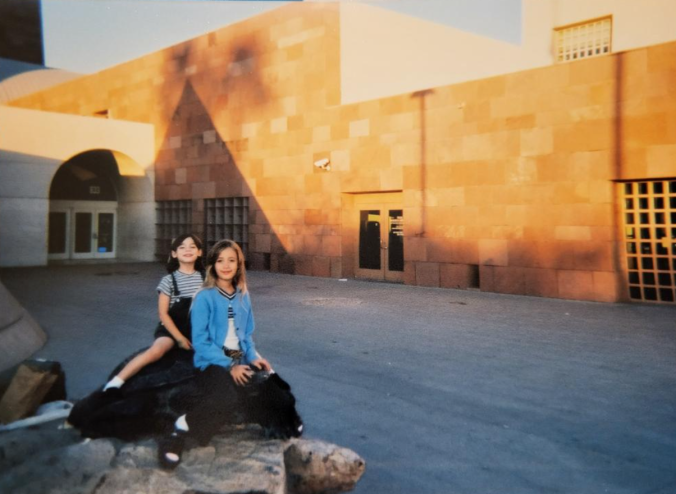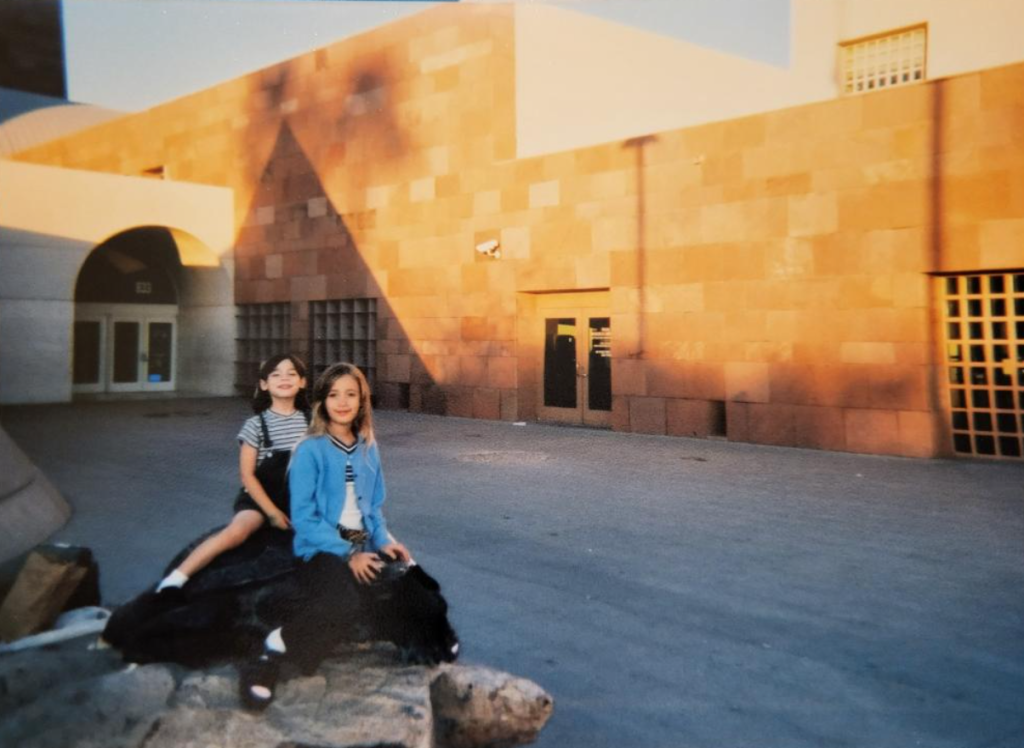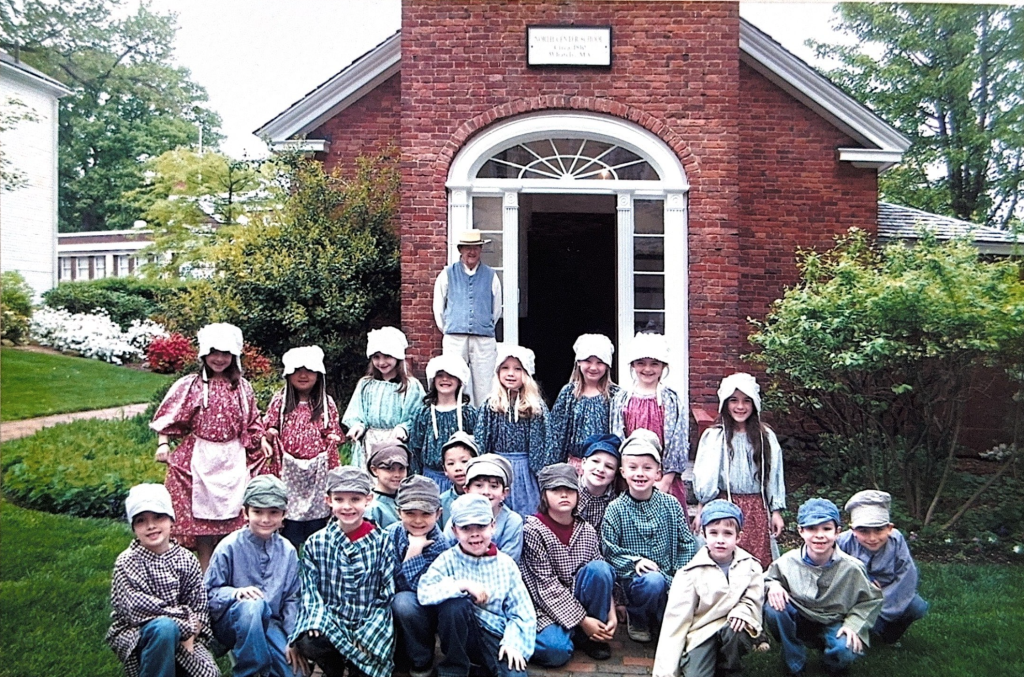Having completed one semester of the Museum Education program and looking forward to starting my second semester this week, one thing I keep coming back to is the idea that many of the people I’ve met thus far–be they guest speakers, professors, or my classmates–didn’t come to museum work in a linear trajectory. In fact, that’s one of the things I love about the museum profession–so many of us, myself included, have tried other majors, other careers, other paths before landing here. But we all ended up here eventually, often with many positive museum memories sparking an interest, even if they were from quite a while ago.
John Falk and Lynn Dierking include this concept of memories in their Contextual Model of Learning [1], which has three interlinking contexts (Personal, Sociocultural, Physical) that are constantly shifting and determine a visitor’s experience during a museum visit. Importantly, they also include Time as being part of the Contextual Model of Learning, stating that, “the museum experience begins long before the visitor arrives and continues long after the visit” [2]. Furthermore, “the museum experience can be a launching pad or reinforcement for interests, helping visitors develop a working vocabulary, conceptual knowledge, and personal memories on a subject” [3].
Today, we’ll take a walk down memory lane, embracing Falk and Dierking’s Time context, and hear stories from myself and my classmates of museum memories from childhood.
(The author astride a desert tortoise statue, seated behind her sister. Photo courtesy of the author’s father.)
Growing up in Las Vegas in the 90s and early 2000s meant that there weren’t all that many kid-friendly or kid-focused spaces, but we did have the Lied Discovery Children’s Museum (now known as the DISCOVERY Children’s Museum). It wasn’t until I was sitting in class at Tufts, hearing about how the Boston Children’s Museum came to be and seeing pictures of their grocery store exhibit that I was rushed back to my childhood spent in the halls of the children’s museum in Vegas. My absolute favorite exhibit was the grocery store space, where there were child-sized carts, plastic fruit and food, and a self-checkout area so you could complete the entire grocery shopping process. They even made their own Lied Discovery Children’s Museum paper money that you used to pay for the food, a delightful detail made all the more funny by the fact that I amassed so much of this money from my visits that when I cleaned my room in high school I found a huge stack of it stashed away somewhere.
The grocery store wasn’t the only exhibit I loved, though. There was a space exhibit that had boots that you could put on to mimic how hard it would be to walk on the moon because of how the gravity is different there. The fun began for me before I even walked in the doors, though, because at the original location there was a giant desert tortoise that my sister and I would sit on, pictured above. Though the memories of the children’s museum have faded ever so slightly, it’s nice to be reminded that I’ve always been a museum lover, and little Lauryn would probably be thrilled by my career choice–so long as there’s a grocery store exhibit involved somewhere.
Isabel Amador, Museum Education first-year student
A timid child, my most harrowing experience came about at the Houston Museum of Natural Science. Upon arrival, the second graders of T.H. Rogers Elementary School were escorted to the museum’s classrooms. As we walked down the halls towards our destination a knot in my stomach grew tighter and tighter. First, we passed a stuffed gorilla, then some birds posed mid-flight overhead, then, sending me into absolute panic, a polar bear, raised onto its haunches, teeth bared and eyes blank. Tears silently poured down my face as I turned into the classroom, eager to escape the nightmares disguised as museum exhibits. I didn’t know at this time that at natural science museums, the taxidermy does not stop in the dioramas. No, these monstrosities are seen as educational tools and therefore litter the walls of their classroom spaces. Entering into the classroom sent me into a full-blown panic attack. Heaving and bawling, I was consoled by a kind museum educator how all the animals in the room died peacefully while they were sleeping. As if that was supposed to detract from their stiff corpses being strung up from rafters. I was escorted from the room by one of the parent chaperones, racing to find neutral ground where I could calm down. We settled into the Hall of Gems. Much the same today as it was back then, the Hall of Gems at the Houston Museum of Natural Science is a string of dark rooms with gems and minerals lit with sharp, cool light, resulting in the most brilliant effects the natural world can produce.
Etched in my brain are the towering amethyst geode, cracked into a throne, and the deep red rhodochrosite cluster, glowing in an unearthly hue. I suppose you could draw from this story a message on how museums have something for everyone or how educational topics always have some sort of emotional undertone, but I mostly put it in the context of my own life. On the same day, I had the worst experience I could have at a museum and the best, yet I still eventually decided to work in museums and to this day remember the word rhodochrosite.
Those reading will be happy to know that my taxidermy phobia has since been reduced to mild discomfort and I have since braved the halls of the Houston Museum of Natural Science (only slightly nauseous).
Ryan Cabrera, Museum Education student
(Photo courtesy of R. Cabrera/the Cabrera family)
In the third grade, Mrs. Fraider told our class that we were going on a field trip to the Little Red School House. Leaving school to go to another school did not initially feel appealing to me. Why couldn’t we just get ice cream like the other class trips?
After a few minute bus ride, we were deposited at the doorstep of a quaint, one-room historic town grade school. The experience transformed as each student was given early 20th-century school uniform outfits, complete with cute little caps. At this point, I remained unconvinced. It was when we were introduced to our guide for the day—a venerable gentleman who had been a student in this very school during his own childhood, that the inspiration started to flow for me. We were given feathers to use as quill pens, and a cursive writing lesson commenced. The teacher recounted how stern school was in this period, in a time where corporal punishment was not just accepted but encouraged. Students were to be on their best behavior.
This is the first time that I can remember stepping back in time and learning about how daily life has changed over the generations. In that moment, a portal to the past opened before my eyes, and I found myself immersed in a world where time flowed backward.
Samantha Snow, Museum Education first-year student
The Griffith Park Observatory in Los Angeles was one of my favorite places as a space-obsessed kid. Leaning back to watch the stars during the planetarium show, my dreams of becoming an astronaut became real if only for a moment as I explored distant star systems and nebulas with my parents in tow (although my mom sometimes used our space travel time as an opportunity to nap in the reclining seats). I remember watching intently for a half hour or more as the observatory’s Foucault pendulum slowly swung back and forth, knocking over a line of blocks one-by-one. It didn’t matter that I was too young to grasp the science behind the pendulum, it was enough to just experience the shared joy of my family and strangers alike as we cheered the falling of each successive block. My time in the observatory connected me to my family, to a larger community, and to the universe itself and sparked a life-long love for museums.
[1] Falk, John Howard, and Lynn Diane Dierking. “Chapter One: Introduction.” Essay. In The Museum Experience Revisited, 23–34. Walnut Creek, CA: Left Coast Press, 2013.
[2] Ibid.
[3] Ibid.



Leave a Reply